
- 7. The top of the pear turns black every year. What is the problem?;
- 8. How to treat a pear from scab?;
- 9. Are red spots on the leaves rust?;
- 10. Why do pear fruits taste bitter?;
- 11. Why do the fruits of the pear fall off?;
- 12. Why do the fruits turn black inside?;
- 13. Why do pear branches turn black?;
- 14. Why does the pear have no growth?;
- 15. Why does the bark of a pear crack?;
7. The top of the pear turns black every year. What is the problem?
If the blackening affects only the leaves, a sticky coating appears on them, erased by a finger — these are sooty mushrooms that like to settle on the sweet secretions of aphids (and the tops of young shoots are a tasty place for it). The fight against aphids allows us to solve this problem as well.
If the bark turns black at the annual growth, and the leaves dry up and turn black, it is most likely a bacterial cancer (the tree can die quite quickly, since young trees are more often affected) or some fungal disease. Urgently cut the affected parts to healthy bark and wood and treat them with fungicides or bactericidal preparations. The probable cause is the disease “came” from the nursery. And the leaves can also turn black due to the lack of some trace elements. Do not forget about timely fertilizing.
8. How to treat a pear from scab?
Scab is a fungal disease that affects not only the pear, but also the apple tree. Characteristic black spots appear on the fruit leaves, the shelf life of the fruit decreases sharply, and the taste worsens. Scab develops especially rapidly in wet years. Therefore, it is better to carry out preventive treatment with fungicides in early spring.
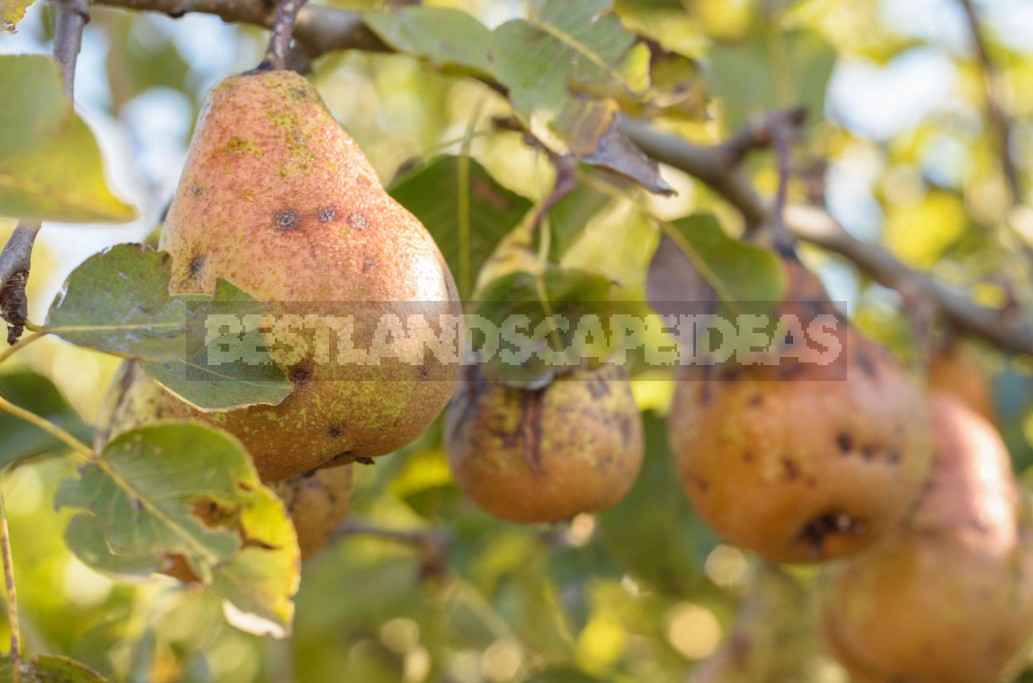
Bordeaux liquid is a popular and universal remedy that eliminates a wide range of fungal diseases. But a 3% solution can be treated only when the trees are in a leafless state: in vegetative plants, the agent causes chemical burns of green parts. After the leaves are blooming and in the summer, you can use 1% Bordeaux liquid. More gentle preparations from inorganic fungicides are created on the basis of copper chloride-they can be processed all year round.
But organic fungicides work only in the warm season (depending on the drug, the air temperature should be at least +10°C). They are merciless to pathogens, but do not damage the green parts of plants.
9. Are red spots on the leaves rust?
If the spots resemble bright red freckles, which then gradually begin to brown from the center to the edges, then yes. Rust is a fungal disease with a complex development cycle, which also involves coniferous plants, especially juniper. Therefore, it is necessary to treat both pear and coniferous trees with fungicides.
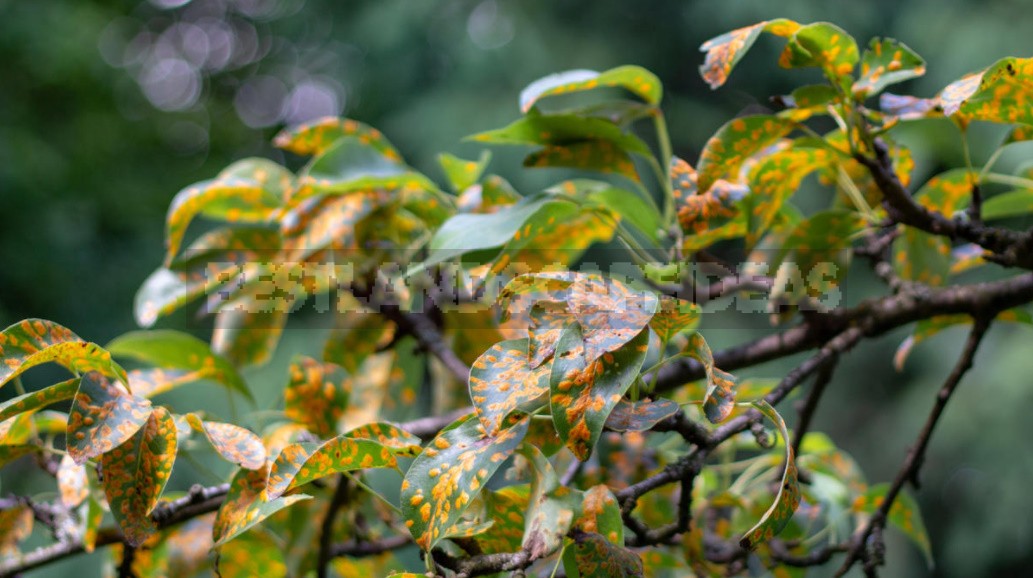
10. Why do pear fruits taste bitter?
Some varieties of pears are genetically predisposed to bitterness. The same applies to rootstocks that affect the graft. The taste changes for the worse if the fruits are affected by fungal diseases. Apple and pear trees may have a bitter pitiness. This is a physiological disorder that is successfully treated by introducing calcium into the soil.
11. Why do the fruits of the pear fall off?
Each plant “secures itself” and lays many times more flowers than it is able to “feed” the fruits. Fruit dumping can be caused by prolonged heat and drought, lack of nutrients or an outbreak of pests that damage the fruits. And the fact that mature fruits easily crumble themselves is most likely a feature of the variety.
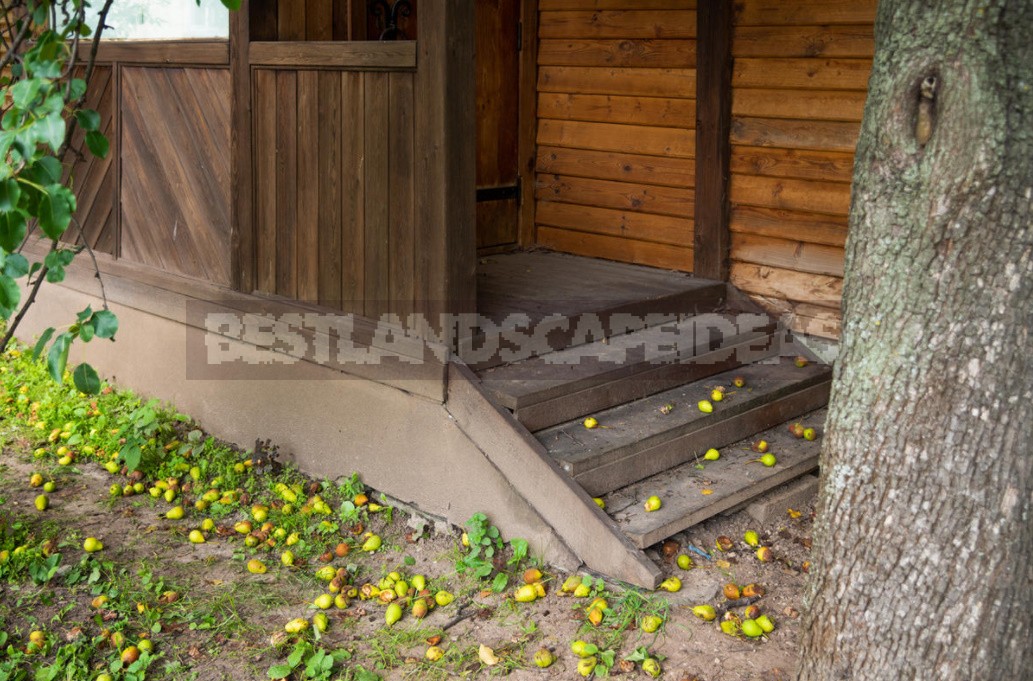
12. Why do the fruits turn black inside?
This may be a varietal feature — the fruits ripen on the tree (many varieties are harvested a little unripe, in technical ripeness). But it is also possible to defeat a variety of fruit rot.
13. Why do pear branches turn black?
These are symptoms of various diseases. To make an accurate diagnosis, it is necessary to see the lesions. If charred black spots appear on the stem and large branches, this is a symptom of black cancer (the disease also affects the apple tree). Cut out all the dried branches, remove the affected bark, clean up to healthy bark and wood, treat with copper-containing fungicides. Repeat the last procedure at least 2 times a year. If the damage is significant, it is easier to remove the branch, even if it otherwise looks healthy.
14. Why does the pear have no growth?
If the tree is young, it may be planted too deep. If the tree is 2-3 years old, it is not too late to dig it out and plant it again — but already correctly. When planting, the root neck should be a few centimeters above the soil level: gradually the earth will settle, and the root neck will be at the desired level. It is undesirable to disturb older trees with a transplant, but it is better to carefully remove the soil from the root neck.

There are cases when the root system of the seedling is damaged, and the stumps of the roots are not able to” feed ” the entire crown. Shorten the aboveground part so that it becomes proportional to the root system, in this case the chances of survival increase, but the tree will lag behind in development.
If the pear is an adult, then there are three probable reasons for the lack of growth.
- The root system has reached the ground water (all fruit trees do not like this).
- The tree is seriously affected by diseases that are asymptomatic at the beginning, and there are no resources left for growth.
- The balance between growth and fruiting is disturbed, that is, the tree needs rejuvenating and restoring pruning. This is a difficult job for several years, and it is better to invite a specialist to perform it.
15. Why does the bark of a pear crack?
In adult trees, the old dead bark begins to crack and peel under the pressure of the growing layers of wood and younger bark from within. Before the autumn whitewash, it is better to carefully and effortlessly scrape off what the tree “gives” itself. Do this when the bark is wet.
There is no mistaking frost cracks — deep longitudinal cracks that capture not only the bark, but also the wood. Autumn whitewashing of the stem and skeletal branches reduces the likelihood of such damage. Frost cracks overgrow for a long time — it is necessary to regularly treat them with fungicidal preparations.
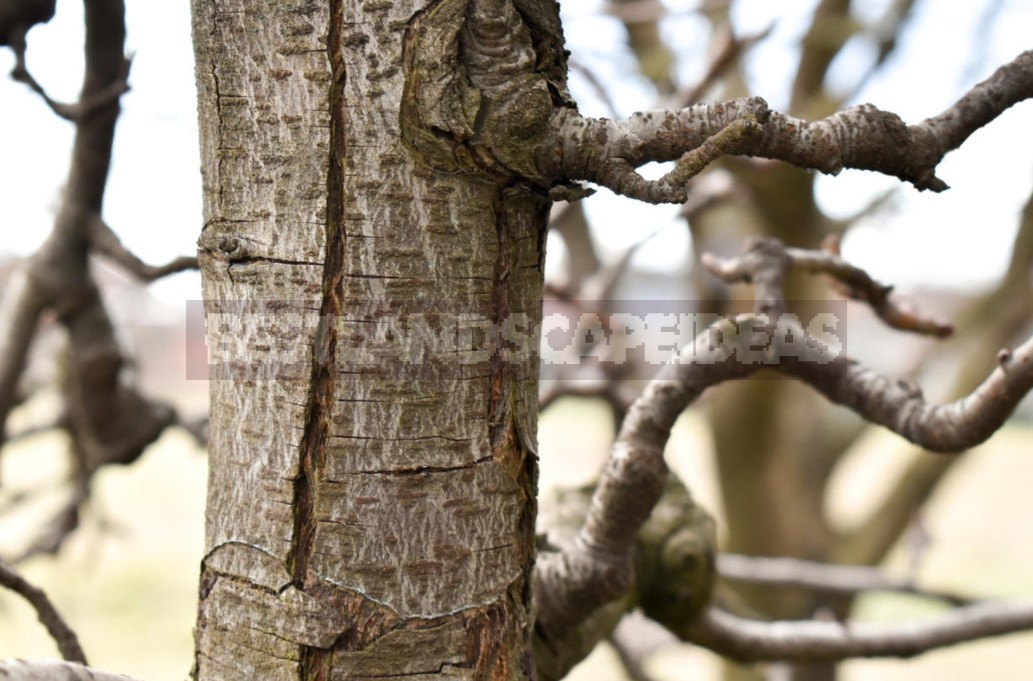
As you can see, most of the problems can be solved. But at the risk of possible bad phenomena, there is nothing more important than prevention — competent planting, timely crown formation, pruning, compliance with the treatment scheme against diseases and pests, as well as regular fertilizing.
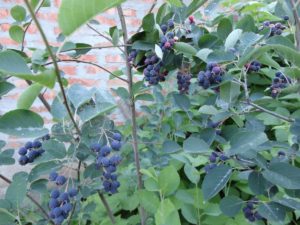



Leave a Reply